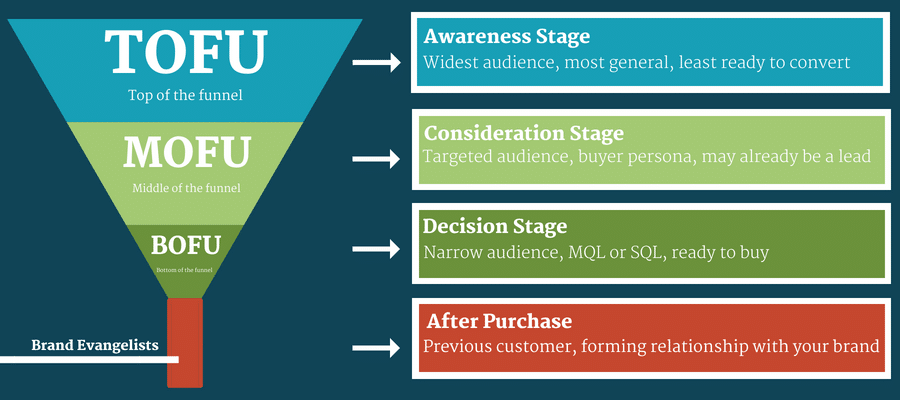While startup growth is a buzzword, different startups have different renditions of it. That in itself is fine, but limiting it to simply say, performance marketing is suboptimal for the business. That’s why startup growth requires a full funnel approach. I typically view it as a path with 4 stages, in the context of businesses which have digital touch points.

Table of Contents
Toggle1. Demand Generation
This is an unfortunate casualty in many a startup growth strategy, as folks simply start from 2. At any point, there are people ready to buy your service/product, but the number of people who could potentially buy your product is usually far more. For these folks, at the very top of the funnel (TOFU, I know I know 😄), you need to increase awareness and create demand. Before you set about doing it, be clear about the brand’s segments and positioning.
With that in mind, your business context, and the resources you have (people, money, time), there are many avenues possible, including traditional advertising – television, print, radio, OOH etc, and digital means – display advertising on Meta and Google properties or even Pinterest/Reddit/Twitter based on your context, content marketing, influencer marketing and so on. If you’re on Amazon, the platform provides multiple ways of finding more audiences. The role of PR is unfortunately often overlooked. (my perspectives here)
Back in 2011, when social media was organically driven, it did a great job for us at Myntra, and we used Facebook, Twitter, Instagram and YouTube to full effect. At Scripbox, educational content and content marketing did the same in the beginning. Later, we also used an influencer-led YouTube campaign – in my favourite campaigns list here.
2. Lead Generation
This stage is made of people in your audience who are in the buying process but want to know more about what they’re buying. Look at it as a casual exploration of options. Having a clear idea about the brand’s target personas, and value propositions custom-made for them is very important at this stage.
A combination of search (organic and paid), and display advertising (affinity audiences on Google for sure) with a host of custom landing pages did the trick for us in Scripbox. (check out one of the winner creatives we used on Facebook below) Cracking a 40+ audience on digital is not an easy task, and this was a result of a series of experiments and iterations.
You could also use affiliate marketing, as well as things such as webinars and downloads to gather leads. This, by the way is MOFU.

3. Conversion
Once you have the lead (mobile number, email) you have reached BOFU, and the toolkit now expands to one of my favourite components in the game to reduce CAC – marketing automation (an interview about Scripbox’s martech stack). Paid media is also a way to convert – retargeting based on first-party data, or even say, in-market audiences. But if you put in the effort in creating the right segments, and crafting a custom journey, the rates of conversion through this owned channel can go a long way in reducing your CAC.
The channels for deploying this are many – emails, web notifications, SMS, app notifications, WhatsApp, custom banners inside the site/app and so on. By really nuancing segments (demographics, source/campaign, behaviour etc), creating a narrative flow, experimenting, iterating, and tracking results, this becomes a powerful tool.
Even if you do not have a specialised tool for this, you can start small, like say, a WhatsApp community.
Data is important for all stages, but especially so for both 3 and 4. Good data has a disproportionate effect on the outcomes.
4. Growth from existing customers
Another area where marketing automation can really help is increasing revenue from existing customers, and thus raising LTV and possibly reducing the payback period. Once again, segmenting customers is crucial. Go beyond a standard framework, like say RFM, and delve into the various ways in which you can dissect your customers – revenue, order frequency, kind of products purchased, NPS scores and so on.
This also gives you additional material for any loyalty and/or referral programs you might be thinking of. Once you start your experiments, start understanding customer cohorts by preferred channel of communication, it could help your conversion and costs.
I have not mentioned measurement here, but very broadly, at a CMO level, I like to keep things simple when evaluating startup growth e.g. though there are abundant metrics available at the top of the funnel – platform metrics for display, social media reach and engagement, number of PR stories etc, I begin with traffic, cost/traffic, and brand search volume. Ditto for the other stages. This is not to say that the additional metrics are not important, but they are for subsequent analysis (and a different post).
How does a Fractional CMO help startup growth?
By understanding the broad context of the business objectives. In the absence of a CMO, a Head/VP-Brand or a Head/VP – Acquisition/Growth more often than not sticks to areas they are comfortable with. And like I said earlier, that’s sub-optimal for startup growth.
